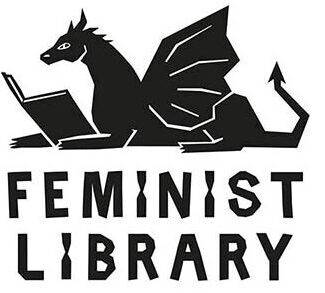Text by Emily Walters
‹ Return to Text by Emily Walters

Reimagining Rosie the Riveter – ‘Ensemble contre le sexisme’ poster (2016) from Lycée Français Charles de Gaulle.
Through its revival of distinctive wartime iconography, ‘Ensemble contre le sexisme’ is a galvanising, provocative print. Invoking history and cultural memory, it speaks to the power of forging solidarity in the face of inequality, erasure and violence.
Created in 2016, this striking poster served to promote a feminist intervention against sexism at Lycée Charles de Gaulle, a French school in London. Taking place over two days, the events included conferences, debates and a photography exhibition. Its artwork appropriates the imagery of an American WWII poster entitled ‘We Can Do It!’ (1943) which introduced the world to Rosie the Riveter, an emblematic factory worker, in the aim of boosting morale among women involved in wartime service.
Against a viridian backdrop, a reimagined Rosie the Riveter meets our gaze. Lips pursed, chin lifted and eyebrows slightly furrowed, her expression poses a challenge to decipher. Her brunette hair is pulled back into a practical, taut ponytail, secured away from her face by a scarlet headband embroidered with ‘LFCDG’. The sleeves of her collared, navy shirt are rolled up to convey her readiness for action, the fingers of her left hand drawing attention to the affirmation ‘Lycée Charles de Gaulle can DO IT!’ tattooed on her arm. Across the top, white capitals spell out the rallying cry ‘together against sexism’ in French, with the beginning of the final word partially obscured by Rosie’s raised, clenched fist. This same, angular, graffiti-esque typeface prints the dates ’18th-19th May’ in the bottom right-hand corner, whilst a presumed artist’s signature, ‘Marinbona’, features opposite, bottom-left.
Viewing this poster from a contemporary, transnational-feminist perspective, it is hard not to feel troubled by the historical imagery it recreates, with its framing of strenuous labour as aspirational empowerment, its promotion of nationalism in the midst of such violent events. But to focus solely on these aspects would equate to overlooking how the war effort expanded constricting expectations of gendered capabilities and duties. To disregard the iconic Rosie would disrespect those who endured that which others can only imagine. Crucially, the 2016 poster is much more intricate and complex than a straightforward reproduction of the 1940s’ design; subtle meanings and messages lying in its deviations from the original propaganda. There is a revealing, productive tension to the juxtaposition of the word ‘ensemble’ – its connotations of community, harmony, togetherness – with a lone figure, poised in a rigid demonstration of her physical strength. It questions: how does the weight of the word ‘together’ shift in a time of war? Equally, if the first evocation of this worker upholds exclusionary beauty ideals – a miniscule nose, defined cheekbones, pale skin – it is worth remarking how the reimagined version softens her features, warms her skin, wipes away the heavy make-up. We are asked to consider: who might have felt alienated, rather than represented, by the character of Rosie? Finally, while the original contained solely English text, the dual-language format of this modern iteration evokes kinship and polyphony, a longing to transcend the divisions of borders and language. Overall, in reawakening and transforming Rosie the Riveter, this poster sparks dialogue across cultures, connecting past and present. It urges for an incarnation of feminism that recognises difference and inequality; an understanding that solidarity can only be formed when struggles are remembered, not erased.
Bio
Emily Walters (she/her) is a linguist, writer and co-founder of MEDUSA (medusacreatives.com / @medusacreatives), a creative collective exploring art and culture through a feminist lens. Much of her work focuses on identity, joy and connection. Keep up with her on Instagram (@emilygracewalters)
and Twitter (@emilywalters__).


